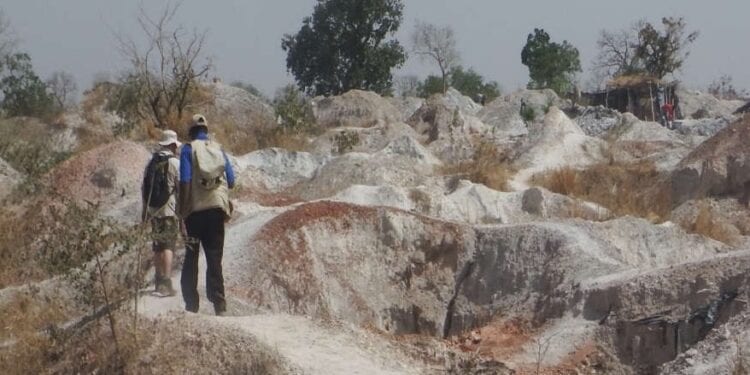Metallurgical Testwork Suggests Straightforward Gold Ore Gold
Initial metallurgical testwork at Marvel Gold Limited’s (ASX: MVL) Tabakorole Gold Project in Mali has highlight the straightforward, non-refractory metallurgical characteristics of the ore.
The preliminary bottle roll metallurgical testwork from Tabakorole provided average gold recoveries ranging from 92.7% to 96.6% for grind sizes (P80) of 150 to 75 microns, with attractive leach kinetics, indicating a likely processing route incorporating a simple, industry standard cyanide leach circuit.
Additionally, the company says low reagent consumption points to a favourable impact on costs.
Managing Director Phil Hoskins, said future testing programmes will focus on comminution work and optimisation of grind size versus reagent concentrations.
“These preliminary metallurgical results are especially encouraging and are an important step in de-risking our Tabakorole Project,” Mr Hoskins said.
“Non-refractory mineralisation with high gold recoveries from direct cyanidation highlights the potential for a simple, industry standard gold processing flow sheet. Future metallurgical testwork is expected to include potential optimisations of grind size and residence times.
“Tabakorole already hosts 910,000oz grading 1.2 g/t gold which remains open along strike in both directions, and at depth. A 6,300m resource expansion drill program is nearing completion with the company more focused on the obvious resource growth potential rather than progressing further testwork or economic studies.
“ In a short space of time, Tabakorole has emerged as a significant deposit within a west African gold context and these metallurgical testwork results, coupled with the expected results of the current drill program, represent significant steps in advancing this project.”
Meanwhile, drill results received from the Stage One 3,800m reverse circulation (RC) drilling program at the Lakanfla Gold Project in Mali have successfully proved the existence of a karst and returned widespread low-grade gold mineralisation.
Targets within the granite intrusion remain to be tested – existing gold mineralisation has been defined by previous drilling including 44m at 1.3 g/t gold and 72m at 1.0g/t gold.
The next phase of Lakanfla drilling will be designed to support resource estimation for this mineralisation.
Encouraging results have also been received from soil geochemistry with multi-element analysis pending.
Results of recently completed drilling, soil geochemistry and passive seismic surveys are being reviewed together with existing data sets to refine the karst model and identify future opportunities.












